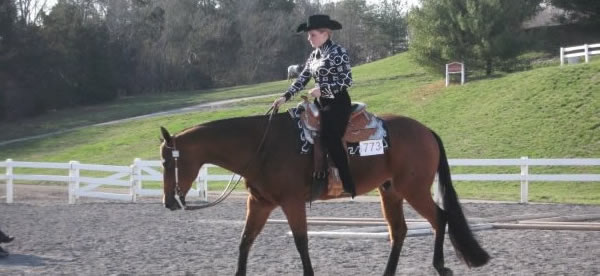Ever wondered what is involved in showing horses? Check out this photo gallery:

Showing quarter horses is not just a hobby, it teaches life lessons.
By Shawn McNally
“What I do, you probably haven't heard of before. It's not barrel racing, or 4H, or show jumping.” Well what is it then? “I show quarter horses,” said Sarah Hering.
Hering, 22, of Frederick, has been showing horses through the American Quarter Horse Association since she was nine years old. “I grew up on a farm and around horses all the time. Showing them became one of my passions early in my childhood.”
What exactly does it mean to show a quarter horse you may ask? “Well, it's complicated,” said Hering.
“There are many different types of events that are involved in showing quarter horses. Personally, my favorites are showmanship and horsemanship.”
In both of these events it is best to begin by imagining an empty indoor arena filled with sand similar to what you might see at a rodeo. Now, imagine within this arena are multiple cones which form a sort of pattern. At the end of this pattern is a judge.
That should allow you to understand the basic setup of both the horsemanship and showmanship events.
“You get the pattern that the judges have created the morning before the event. From that point on you are practicing that pattern with your horse for hours at a time,” explained Hering.
The equestrian does not have to simply navigate cones. Instead, they are required to employ certain maneuvers on their way to and once they reach each cone.
“Trots, spins, walks, back ups, stops, lead changes, and circles” are just a few of the different skills required of both rider and horse during any one pattern.
“Another misconception that a lot of people have, besides that all equestrians do is ride their horses and do jumps, is that you are always on top of your horse,” Sarah Hering said.
That's right, in the showmanship class equestrians are required to do all of these maneuvers from beside their half-ton horses instead of in the saddle which is the norm in horsemanship events.
“You have body language, your halter and your lead to direct the horse and that's it. It requires a great amount of trust and understanding between horse and rider. You have to have a real bond.”